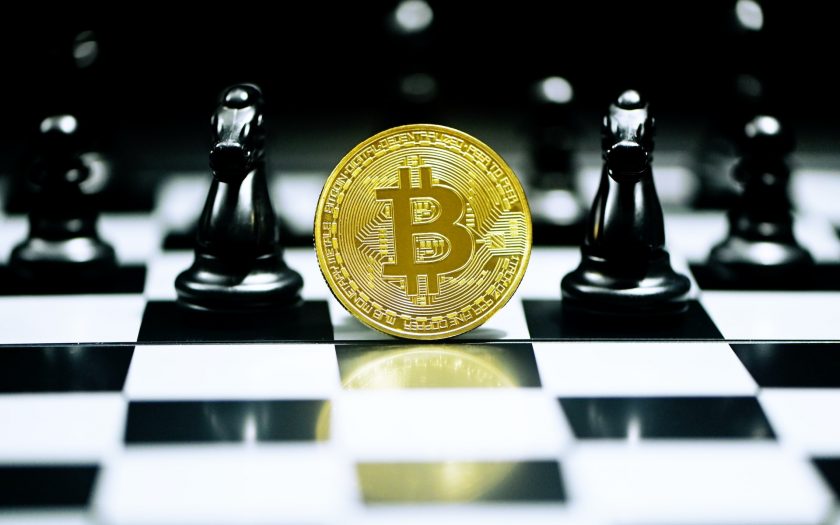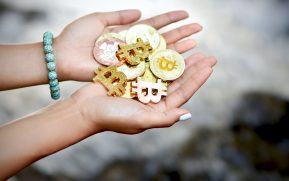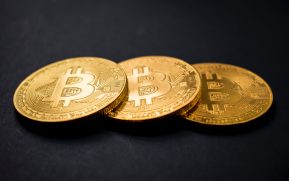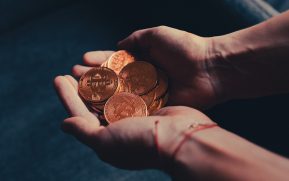
Published
on
By
By Tom Cassauwers
Sam Bankman-Fried was the darling of the cryptocurrency world, then he became its black sheep. In November of this year, the cryptocurrency company he founded, Futures Exchange (known widely as FTX), collapsed in a spectacular way.
The exchange, a digital platform where users can buy and sell cryptocurrencies, filed for bankruptcy after allegedly mishandling customer funds. Bankman-Fried had previously been well-liked by investors and media, which applauded his generous donations to charity and for calling out unethical practices in the industry. The bankruptcy destroyed that image. The collapse also came on the heels of a massive crash of cryptocurrency prices, and the failure of several big players in the industry.
Behind this crash and claims of fraud, companies remain surprisingly optimistic about the potential of blockchain.
One of those is Motoblockchain, a small start-up from Malaga, Spain. They created a system where all the relevant information about a motorcycle (its parts, usage and repairs) can be stored on a blockchain. Everyone, from mechanics to riders wanting to buy a second-hand bike, can access the records in this system to verify the origin and history of a motorcycle.
‘Having a trustworthy way to show the provenance of a product, or its parts, is really important in a lot of industries,’ said João Fernandes, analyst at the Portuguese investment fund Bright Pixel Capital, which supported Motoblockchain through the EU-funded project BlockStart. ‘It’s also something blockchain excels at. It gives an extra layer of credibility to information in an ecosystem.’
This trust is one of the many advantages that blockchain technology might offer the European economy. It is keeping start-ups like Motoblockchain hopeful about blockchain despite the spectacular boom and bust cycles of crypto. Stimulating their growth, and convincing European companies to use the technology, might be crucial for the long-term success of blockchain.
‘The impact of blockchain will only be fully fulfilled if we convince SMEs to use it,’ said Fernandes. ‘Over 90% of the economy is composed of these businesses. And plenty of those companies can really benefit from using blockchain-based technologies.’
No intermediary
Blockchain allows cryptocurrencies to digitally register transactions without one party controlling the currency. In contrast to regular databases, which are generally controlled by one party, it’s decentralised.
What’s most important is that blockchain technology (distributed ledgers) can be used to record anything of value without an intermediary – not only financial transactions.
This is a concept with applications far beyond cryptocurrency. For example, it is useful to track the history of a motorcycle, as Motoblockchain does. The motorcycle might pass through dozens of inspections, visits to the mechanic and sales throughout its lifetime. A range of actors, such as users, motorcycle companies and repair shops, need to pass along this information. Which is hard using centralised systems. A motorcycle company might not want to use a centralised tracking system owned by one of its competing motorcycle manufacturers. A decentralised, neutral blockchain offers an alternative here.
‘Blockchain shines when there are multiple different stakeholders that need to access the same system and share information in a decentralised way,’ said Robert Richter who coordinated the EU-funded Blockpool project at the Frankfurt School of Finance & Management. ‘It creates a system where you don’t need an intermediary.’
In this way blockchain might underlie some of the software regular people rely on in the future, without knowing it.
‘Look at the internet,’ said Richter. ‘Today everyone uses it without understanding how it works. But in the past, it was something new that had to be developed. The same thing is happening now with blockchain.’
For that to happen, start-ups will need to develop blockchain applications that make the complex technology accessible for regular companies, like SMEs. A problem that BlockStart and Blockpool worked on for several years. Both projects set up programmes that selected interesting blockchain start-ups, gave them funding and mentoring, and linked them to possible clients. On top of that, they educated existing companies about the potential of blockchain.
‘We found that one of the key hindering effects to the success of blockchain is that business executives don’t have enough knowledge about the potential of the technology,’ said Richter. ‘Which is why educating SMEs, and other companies, is so important.’
BlockStart supported 60 start-ups, linked them up with 67 SMEs, and also gave €20 000 to the start-up finalists. Blockpool did something similar, 25 start-ups went through their programme, during which they each received up to €30 000 in equity-free investment.
One of the SME’s that participated in BlockStart is AlBicchiere, an Italian company that offers a “Nespresso for wine” device to customers. The company wanted to be able to chart the journey of their wine, from the grape grower to the customer, and a blockchain system was built by Datarella, one of BlockStart’s start-ups, for this purpose.
Crypto winter
Surviving crypto winter won’t be easy. Most of these start-ups now need to deal with a technology market that is in upheaval. Even regular technology companies are in trouble, with large players such as Meta, Amazon and Spotify announcing mass layoffs. This might put a damper on the growth of the start-ups supported by BlockStart and Blockpool.
‘The current crypto winter will, I believe, delay the implementation of blockchain,’ said Fernandes. ‘Some projects will have a tougher time raising investment, and finding customers.’
But for the wider blockchain and cryptocurrency space, this crash might be a blessing in disguise, according to Richter and Fernandes. For instance, it could weed out the weaker companies, in favour of the ones with the biggest potential.
‘There are some blockchain projects and cryptocurrencies out there that don’t really serve a purpose,’ said Richter. ‘That’s always the first question I ask: does it have a use-case?’
Fernandes agrees. ‘The blockchain space was too crowded before. Now, only the best projects will survive. The survivors of this winter will be the first movers of the future. In five to 10 years they will become the winners.’
Research in this article was funded by the EU. This article was originally published in Horizon, the EU Research and Innovation Magazine.
Russia and Iran are building a Trade Route that defies sanctions
The Promise of Blockchain in Mega Sport Events
Reviewing ARK Coin – Is It The Solution To Your Bitcoin Headache?
Crypto Sustainability Coalition to Investigate Potential of Web3 Technologies in Fighting Climate Change
Promoting Blockchain Technology Innovation and Adoption in Pakistan
UN trade body calls for halting cryptocurrency rise in developing countries
Slow Moving Regulatory Decision Making for Cryptocurrency not Economically Favourable
Published
on
By
Russia and Iran are building a new transcontinental trade route stretching from the eastern edge of Europe to the Indian Ocean, a 3,000–kilometer (1,860–mile) passage that’s beyond the reach of any foreign intervention, informs Bloomberg.
It’s an example of how Great Power’ competition is rapidly reshaping trade networks in a world economy that looks set to fragment into rival blocs. Russia and Iran, under tremendous pressure from sanctions, are turning toward each other—and they’re both looking eastward, too. The goal is to shield commercial links from Western interference and build new ones with the giant and fast-growing economies of Asia.
The emerging trade corridor would allow Russia and Iran to shave thousands of kilometers off existing routes. At its northern end is the Sea of Azov, which is bracketed by the Crimean Peninsula, Ukraine’s southeastern coast — including the Russian–occupied port of Mariupol — and the mouth of the River Don.
Earlier this month, listing his country’s gains from the war in Ukraine, President Vladimir Putin said the Sea of Azov “has become an inland sea” for Russia. From there river, sea and rail networks extend to Iranian hubs on the Caspian Sea and ultimately the Indian Ocean. Putin has flagged the importance of that end of the corridor, as well.
At an economic forum in September he underlined the need to develop the ship, rail and road infrastructure along the route that “will provide Russian companies with new opportunities to enter the markets of Iran, India, the Middle East and Africa, and will facilitate supplies from these countries in return.”
That alarms the US and its allies. “It is an area we’re watching carefully, both that route and more generally the Iranian-Russian connection,” said the Biden administration’s top sanctions official, James O’Brien, after announcing new punishments last week that target executives at Russian Railways. “We are concerned with any effort to help Russia evade the sanctions.”
Ships sailing the Don and Volga rivers have traditionally traded energy and agricultural commodities — Iran is the third-largest importer of Russian grain — but the range is set to widen. The two countries have announced a raft of new business deals that cover goods including turbines, polymers, medical supplies and automotive parts. Russia also supplies nuclear fuel and components for Iran’s reactor in Bushehr.
Russia needs to compensate for the sudden breakdown of its commercial ties with Europe, which before the war was its biggest trade partner, as well as finding workarounds for US and European Union sanctions.
Russia is planning to invest $1 billion to improve navigability across the Azov, into the Don River and across the canal linked to the Volga. Hundreds of ships a day travel through the passage linking the Black and Caspian seas, according to Bloomberg data, with traffic jams routinely building up around the narrowest points.
Ship movement data compiled by Bloomberg already show at least a dozen Iranian vessels, some operated by the US-sanctioned Islamic Republic of Iran Shipping Lines Group, plying waters between the country’s Caspian coast and key Volga River ports.
Trade delegations are shuttling between Iran and Russia with growing frequency — and trade is rising, too. Officially it surged by almost half through August this year. The annual figure likely will soon exceed $5 billion. There’s a “clear path” to reaching $40 billion once a free-trade agreement is in place, Sergey Katyrin, the head of Russia’s Chamber of Commerce and Industry, told a conference in Tehran.
For Iran the pivot has become more urgent amid faltering efforts to restore the 2015 deal with world powers, which lifted sanctions in exchange for restrictions on the country’s nuclear program. Iranian officials say they’re fully focused on what they call “the Eastern axis” — scrapping any plans to revive economic ties with Europe and instead pursuing a slew of trade and energy agreements with Russia, China and Central Asian nations.
Largely beneath the radar of Western governments, a concerted effort has been under way for years to knit together that whole Eurasian territory. China and Russia are already members of the Shanghai Cooperation Organization, an economic – security body that is making Iran its ninth member. China and Iran are both close to gaining membership in the Eurasian Economic Union, which will make free trade across the countries possible. Another institution that links economies in the region and beyond it the BRICS group. Initially made up of Brazil, Russia, India and China, it now also includes South Africa and is poised to expand further.
International Affairs
Published
on
By
The West’s primary point of concern should be Russia and China’s recent commitment to de-dollarize their transactions and establish a financial bubble immune to Western sanctions, notes “The National Interest”.
There is a tendency in the West to discount Russian projects that supply the regime with enough funds to make it to the next month but cannot realistically last for an extended period of time. The problem with this mindset, though, is that Russia has no intention of reverting back to its participation in the U.S.-led international system since it is convinced that China holds the future.
Just as Putin demanded that European companies pay for Russian oil and gas in rubles or gold at the beginning of the year, he has also pressed Chinese energy firms to pay for gas in rubles or yuan. Russian banks have begun issuing checking and savings accounts in Chinese yuan.
In the past, it may have considered the dollar or the euro because they still represent the overwhelming majority of global trade, but this is no longer the case.
“Purchases of currencies of unfriendly countries, primarily dollars and euros, are now impossible,” – (Russian) Finance Minister Anton Siluanov said during an interview. “For us, these currencies are toxic.” When asked why Russian assets in dollars and euros are still accumulating abroad if Moscow intends to dissolve all links to these currencies, Siluanov maintained that Russia is in the process of abandoning them before adding a curious line: The only options that remain for Russia are “rubles, a currency that we trust, or imports that are of interest to us.”
Russia’s economy is also structured to take advantage of the war over energy. When adjusted for purchasing power parity, Russia has the sixth-largest GDP behind Germany. Sectors matter more than size, however. In 2021, Russia’s economy was composed of the following sectors: services (53 percent), agriculture (3.8 percent), industry (33 percent), and manufacturing (14 percent)—the total exceeds 100 percent because there is some overlap.
Russia’s comparative agricultural might reveals why it is at ease with provoking a food shortage and delaying grain exports from Ukrainian ports. Not only will Russian citizens suffer less than their European neighbors, but China is less likely to be affected by its food diplomacy.
Indeed, agriculture was one of Putin’s focal points during the recent Supreme Eurasian Economic Council meeting. Putin celebrated that agricultural production rose 5.4 percent among the members of the Eurasian Economic Union (EAEU) in 2022. This “very good growth,” he said, “is all the more important… amid the growing food crisis in the world.” Putin could not help mentioning that gas prices in EAEU countries are currently “ten times” less than in the EU.
Moscow has made its greatest strides toward de-dollarization domestically, however, and this initiative is inextricable from its coercive natural resource diplomacy. For instance, major fuel and oil companies are planning to increase the use of the yuan in their operations. In August 2022, Russians bought a record number of the Chinese currency after Beijing doubled the yuan-ruble trading band in March to provide more flexibility in currency exchanges.
Putin said that Russia “will not give up the dollar,” but will instead dramatically reduce its shares.
Published
on
By
Cambodia’s efforts to promote a resilient recovery from recent economic shocks were today bolstered by a $274 million credit from the World Bank for the Cambodia Growth and Resilience Development Policy Operation. The financing approved by the World Bank’s Board of Executive Directors will support reforms that will boost growth and strengthen Cambodia’s resilience.
Cambodia’s economy was badly affected by the COVID-19 pandemic, with GDP contracting by 3.1 percent in 2020, the country’s first recession in 30 years. Simulations show that the poverty rate increased by 2.8 percentage points, pushing about 460,000 individuals into poverty. The government responded quickly and effectively to the pandemic, assisting business and vulnerable families, but the associated rise in spending has meant that fiscal consolidation will be required in the period ahead.
While the economy has recovered in 2021 and 2022, the weakening external environment means that returning to the strong rates of growth seen prior to the pandemic will prove challenging. The ongoing war in Ukraine, economic slowdown in the United States — Cambodia’s largest export market — and slower growth in China will all affect Cambodia’s trade prospects. The country is also highly vulnerable to the impacts of climate change, with high exposure to floods and drought.
The operation supports reforms that will streamline the business registration processes, promote competition, and expand access to finance for small and medium enterprises. Other reforms will enhance fiscal resilience, including by improving the management of Public Private Partnerships and facilitating the issuance of government debt in the domestic market. The operation will also facilitate the timely provision of relief to a broader set of vulnerable households in the event of a natural disaster or economic shock.
“While Cambodia’s ‘Living with COVID-19’ strategy has helped rebuild the economy, the country remains vulnerable to downturns in external demand and disruptions in global supply chains,” said Maryam Salim, World Bank Country Manager for Cambodia. “This new operation will help Cambodia boost private sector competitiveness, strengthen its fiscal position, and provide assistance to its most vulnerable people.”
The operation is anchored in the government’s post-pandemic Economic Recovery Plan, which has three broad objectives of recovery, reform, and resilience, and builds on the $200 million Cambodia Relief, Recovery, and Resilience Development Policy Financing operation approved in 2021. The financing provided by this operation will help to alleviate some of the fiscal pressures that the government is now facing, having run relatively large deficits in recent years. The $274 million credit is provided by the International Development Association (IDA), the World Bank’s fund for the poorest countries.
Iran’s nuclear program has remained one of the most crucial foreign policy issues for the US. After the invasion of…
A hundred million people were forced to leave their homes in 2022. The UN continued to help those in need…
Qatar 2022 put the myth of a separation of sports and politics to bed. Like in Qatar, human, worker, and…
The South African Institute of International Affairs has put into circulation its latest policy report on Russia-African relations. In the…
By Tom Cassauwers Sam Bankman-Fried was the darling of the cryptocurrency world, then he became its black sheep. In November of…
Relations between Russia and countries such as Cuba cannot be built according to the general patterns of “nothing personal, just…
For the past two decades, Russia has been dominating this fight for the Arctic, building up its fleet of nuclear-capable…
Ambassador Johnnie Carson Heads U.S.-Africa Leaders Summit’s Partnership Projects
The Semiconductor Industry and its future
De-Europeanisation of History
Russia goes toward de-dollarization
Platform for Dialogue
New partnership aims to accelerate Global Biodiversity Framework implementation
India’s Principled Neutrality Reaps Grand Strategic Dividends
New Kazakhstan vs. Divided Kazakhstan: Policies Critical for Tokayev
Copyright © 2021 Modern Diplomacy
 How To Make Huge Profits In A Short Time With Crypto
How To Make Huge Profits In A Short Time With CryptoGet detailed training system that shows an absolute beginner (without any skill) how to make huge profits in a short time with crypto.
 Crypto + NFT Quick Start Course
Crypto + NFT Quick Start CourseThe #1 course for profit in the Crypto & NFT world - You will discover the secrets that 99% of people don’t know yet





